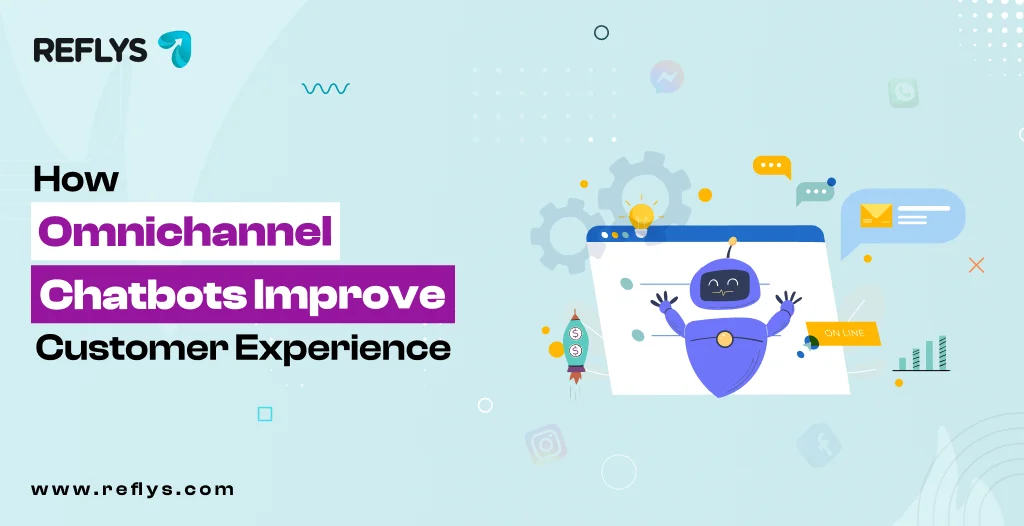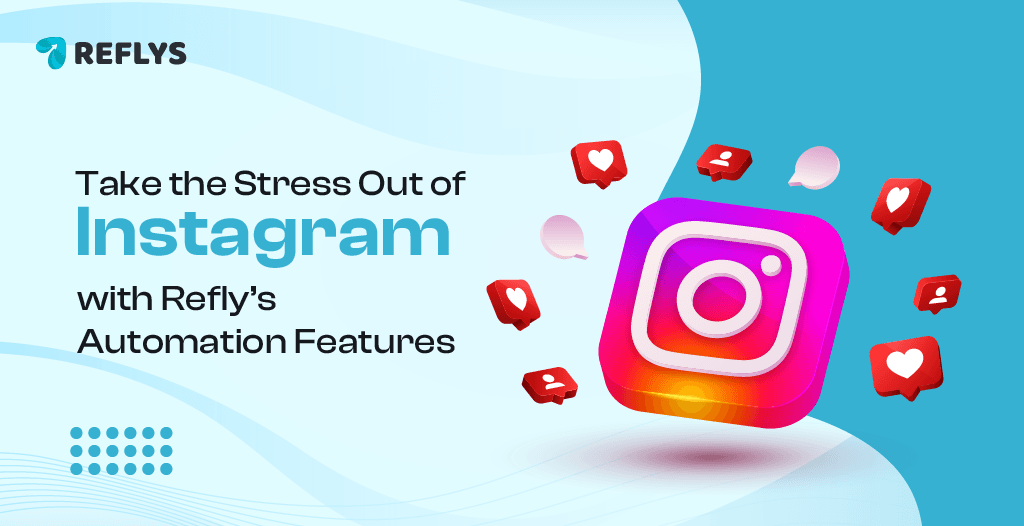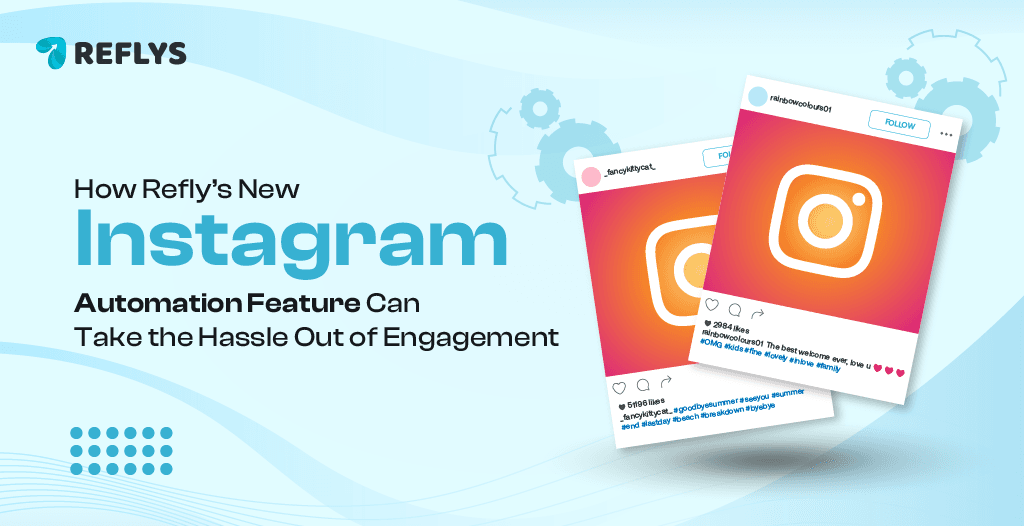How Omnichannel Chatbots Improve Customer Experience
In the digital age, customers have changed their expectations quickly than ever. The days when customers waited in long queues or received reply emails are over. They demand immediate, personalized and uniform forms of interactions, no matter where they connect with a brand.PwC has found that 86% of the customers are willing to spend more to receive a better experience. Thus, a great customer experience (CX) is not an option, but it is essential for all businesses.
From traditional methods, such as visiting a website, to new methods, like communicating directly through social media with brands, customers want brands to interact directly in their own language. This is where the chatbots of an omnichannel step in. The smart tools enable companies to provide a personal and blended experience in all digital interfaces.
In this blog, let’s discuss the role of omnichannel chatbots in customer experience with the help of personalization, efficiency, and consistency, and why they are transforming customer engagement to be relevant in the business of the future.

What Is an Omnichannel Chatbot?
An omnichannel chatbot is a smart, AI-powered assistant that connects and interacts with multiple platforms, including your website, Instagram, WhatsApp, Facebook, or mobile app, while maintaining the same context and a record of prior conversations.
In contrast to an ordinary chatbot, which functions within a single platform or a multi-channel chatbot that operates independently of each channel, an omnichannel chatbot maintains synchronous conversation across all channels.
For example, a customer can initiate a chat on Instagram, proceed to your site and complete on WhatsApp, without losing the context and repeating information.
These chatbots are based on Natural Language Processing (NLP) and Machine Learning (ML) to interpret human intentions and can respond smartly.
It is important to consider that
- 79% consumers are demanding reliable cross-channel communication ( Salesforce).
- Those companies that have an omnichannel engagement strategy still retain 89% of the customers (Invesp).
That is evidence that the automation of omnichannel chatbots directly contributes to loyalty and long-term customer satisfaction.
How Omnichannel Chatbots Work Behind the Scenes?
So how does an omnichannel chatbot provide a seamless customer experience? Let’s discuss it in simple steps for better understanding.
- Customer Initiation: A user initiates a chat on some platform, let’s take your website.
- Intent Recognition: The chatbot uses NLP to understand the intent of the user, for example, “track my order.”
- Data Access: It collects information from your built-in CRMs or knowledge base for the details that matter most.
- Response Time: The chatbot provides an accurate and personalized response instantly or directs the conversation to a live agent.
- Context Retention: In case users eventually switch to WhatsApp, it would be great if the bot could continue using that previous conversation without losing history.
For Example:
A customer can check the status of an order on your site, receive a WhatsApp update when that product ships and offer feedback via Instagram DM, all in one connected experience.
And the impact? CRM software with chatbots can help you achieve a 35% increase in response accuracy, which speeds up the process and, in turn, builds trust with your customers.
Key Features of Omnichannel Chatbots
Let’s highlight some of the best features that take omnichannel chatbots to another level in customer support.
- Multi-Channel Integration: Runs smoothly on web, apps and social — one platform for all your use cases.
- Intent Recognition: Conversational with your customer questions via NLP.
- Knowledge Base Access: Retrieve instant answers from your company data or FAQs.
- Personalization: Remembers the user’s history, preferences and tone to provide more relevant experiences.
- Analytics Tracking: Monitor engagement, satisfaction and popular questions to help guide decisions.
- Live Chat Handoff: Manages situations where it’s time to introduce human agents.
Gartner predicts 75% of customer assistance will be automated, serving as a function via AI-powered chatbots in 2026. This trend is an indication that companies are assuming automation is not just for efficiency, but for real, connected engagement.
Why Omnichannel Chatbots Are Essential for Modern Businesses?
Let’s see how these omnichannel chatbots have transformed brand engagement through real analytics
Deliver 24/7 Customer Support Without Fatigue
Chatbots never sleep. They have no boundaries, from time zones to holidays. According to IBM, response times can be reduced by 90% using chatbots, keeping customers happy while human teams are unavailable.
Boost Efficiency and Cut Costs
Chatbots automate repetitive questions such as order tracking, booking updates, or FAQs and save businesses up to 30% in support costs (Chatbots Life). Thus, it allows your team to concentrate on the complex things that require attention or creativity.
Personalize Customer Interactions
Omnichannel chatbots use stored information to provide custom replies, so customers feel like they’re being recognized. Epsilon reports that 80% of consumers are more likely to make a purchase when brands offer personalized experiences.
Ensure Consistency Across Channels
No more inconsistent messages. No matter whether a user communicates with your bot on Instagram or visits your website for the first time, they receive the same tone and the same types of answers and accuracy, creating brand trust.
Enable Data-Driven Decisions
Omnichannel chatbots track behavioral data too, what customers asked, when and how often, to help businesses update their strategy. According to McKinsey, Data-driven customer experience strategies drive a 15% increase in revenue.
How Omnichannel Chatbots Improve Customer Experience?
Now, let’s discuss how omnichannel contributes to the success of customer experience.
Frictionless Transitions Between Channels
Customers don’t have to restart the discussions or highlight their issues again on different platforms for the same brand. A conversation that starts on a site and moves over to WhatsApp even continues unhindered. This reduces annoyance and cuts down on processing time to provide a seamless customer experience.
Real-Time and Proactive Assistance
Chatbots can answer quickly to inquiries about orders, billing, or appointments. HubSpot reported that 64% of people believe that real-time is the single most important aspect in customer service. For example, a travel chatbot might send proactive reminders about check-ins or flight details — showing that a company cares before the customer even asks.
Empowering Self-Service and Reducing Wait Time
Options, including self-service, such as FAQs or automated flows, allow customers to solve the problems individually. Zendesk reported that self-service has the potential to increase the score of customer experience by 23%. That means customers can get assistance more quickly and your team can receive fewer tickets.
Increased Engagement and Retention
Omnichannel chatbots do more than just solve issues; they can engage in meaningful conversations. They can suggest products, promote deals and foster loyalty. According to Invesp, multichannel shoppers are worth 30% more than those using a single channel for communication.
Best Practices to Implement an Omnichannel Chatbot Successfully
Creating an outstanding chatbot experience is not challenging; it requires a strategic approach to technically run chatbots. These are some of the best practices to implement an omnichannel chatbot successfully.
- Have a Clear Goal in Mind: Determine if your chatbots are for sales, support or lead generation.
- Create Natural Conversations: Just like a real person, always try to keep responses friendly and natural.
- CRM & Marketing Tools Integration: All systems must be integrated for consistency in data.
- Test & Optimize Continuously: Leverage analytics to uncover vulnerabilities and increase the level of precision.
- Prepare for Live Agent Handoffs: Ensure smooth transitions to live agents when cases require extra attention.
Thus, brands that allow chatbots to learn around the clock have a 2.5 times faster resolution of issues, both delivering greater performance and satisfaction simultaneously.
The Future of Omnichannel Chatbots
The future of customer experience is powered by AI, voice assistants, and predictive analytics.
Next-generation omnichannel chatbots will go beyond simple replies. They’ll anticipate customer needs, automate follow-ups and personalize experiences based on emotions, history and context.
Thus, the future of customer experience (CX) is not just about answering simple queries; it’s also about anticipating them.
Conclusion
In today’s competitive market, brands that prioritize consistent, fast, and personalized communication stand out. Omnichannel chatbots make that possible by merging every channel into one seamless journey, delivering 24/7 support, reduced costs, and higher retention rates.
If you want to elevate your omnichannel customer experience, Reflys can help you automate, personalize, and scale customer conversations, all from one unified platform.
Ready to enhance your Customer Experience (CX)? Let Reflys take your customer engagement to the next level.


